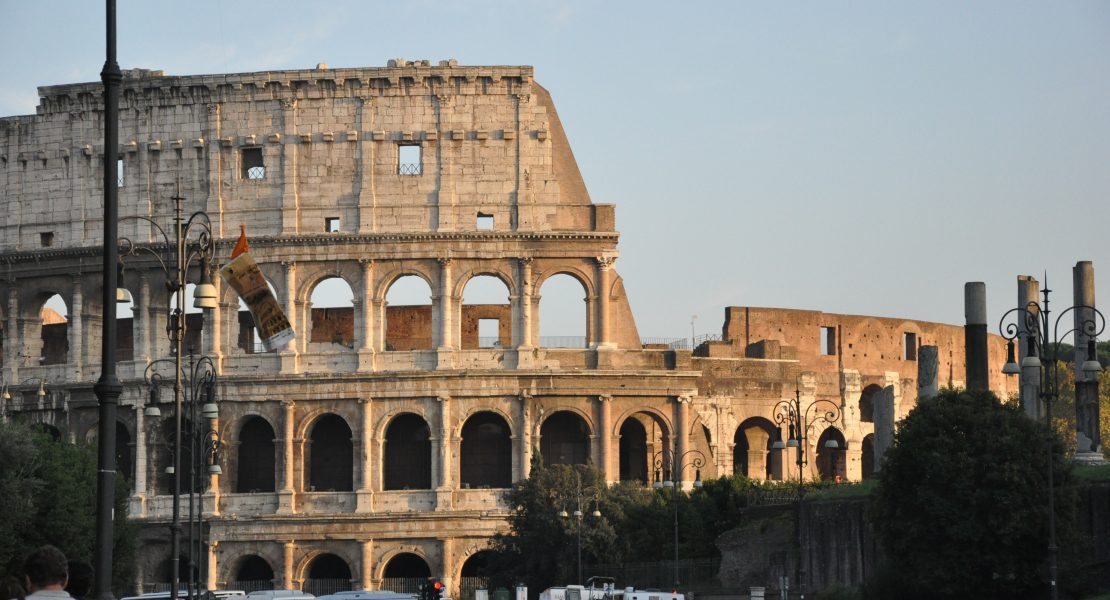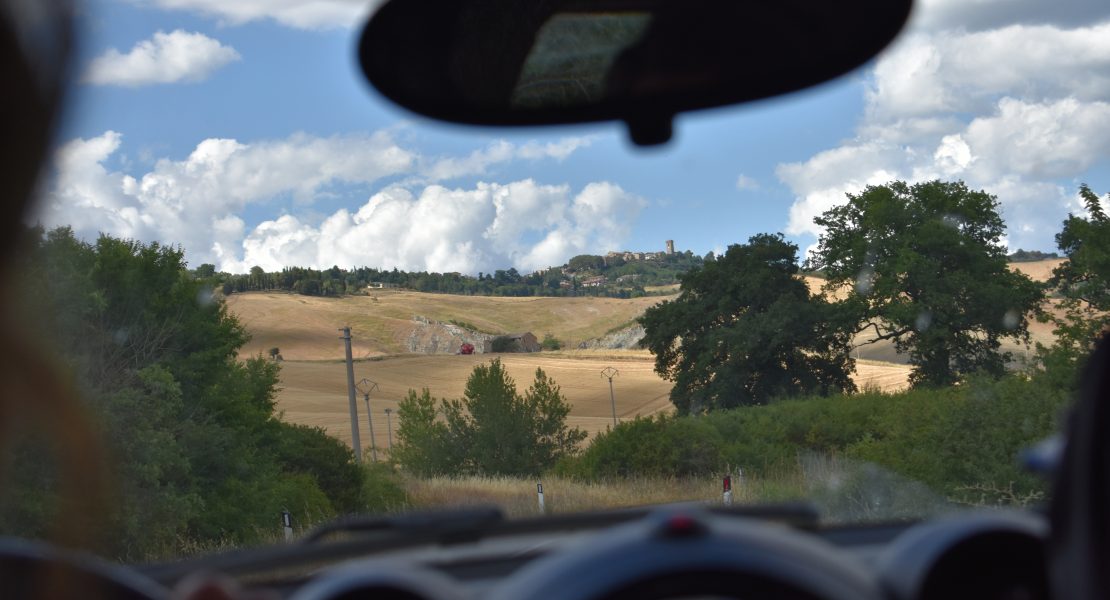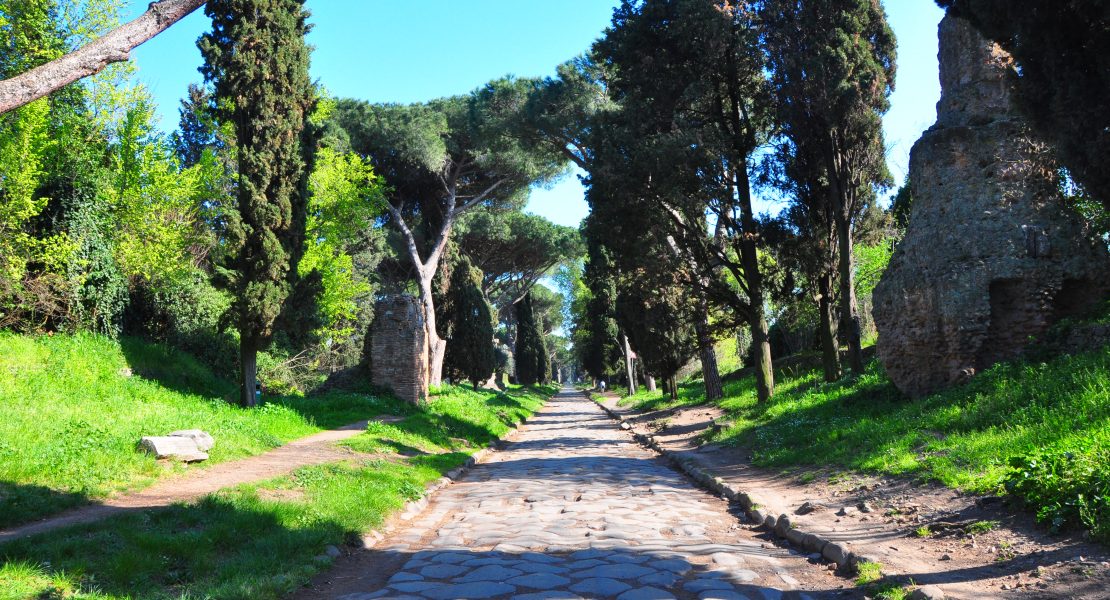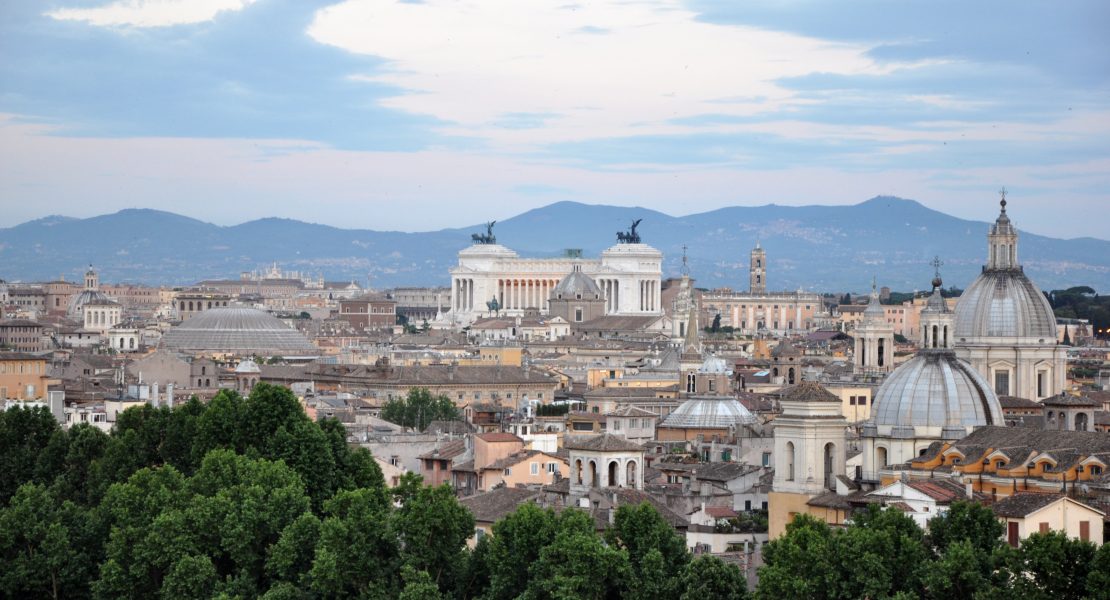The most romantic hotels and B&Bs in Rome–perfect for a honeymoon or other romantic break!
 Planning a honeymoon in Rome… or simply looking for a romantic break? Here's my list of the eight of the most romantic Rome hotels!
Planning a honeymoon in Rome… or simply looking for a romantic break? Here's my list of the eight of the most romantic Rome hotels!
Of course, one person's amore-inspiring room is another person's crazy-maker. So let's break it down. If your idea of romance means….
Knights, turrets and damsels:

Then stay at: Hotel Campo de Fiori (above and top left). Located in a Renaissance-era palazzo right on Campo de Fiori (luckily, given the piazza's popularity with late-night carousers, all the windows are fully soundproofed), the boutique hotel's 23 rooms come with the kinds of details that'll make you feel like you've fallen into a fairytale—think velvet headboards, elaborate tapestries, wood-beamed ceilings, crystal chandeliers, and ornate gilt frames, even for the flat-screened televisions. As with most Rome hotel rooms, the standard rooms aren't particularly spacious, and they tend to be on the dim side. But that's all part of the Olde Worlde romance. Doubles start at €150 a night. Via del Biscione, 6. +39 0668806865.
Or: Hotel Manfredi Suite in Rome (above). This 2-year-old hotel hides in an 18th-century palazzo on artsy Via Margutta. Rooms aren’t big (they start at 140 square feet), but with their deep colors, ornate wallpaper, and elaborate gold frames, they still manage to feel nearly regal. For more space, opt for a deluxe, which starts at 215 square feet—or live like a king in a 430-square-foot junior suite. Doubles start at €150 a night. Via Margutta, 61. +39 063207676.
Sexy times:
Then stay at: Spagna Royal Suite. This brand-new boutique hotel has details so sensuous, they'd be ridiculous—if they weren't so cool. Think unusual features like an in-room steam sauna or mosaic Jacuzzi, not to mention lots of play with textures and lighting, with everything from leather to snakeskin to gold gilt showing up on the walls. Rooms start at €200 a night. Via Mario de’ Fiori, 3. +39 0669923793.
Or: Suite Sistina (above). At this little boutique hotel, tucked behind an almost-anonymous door on the street that runs from the top of the Spanish Steps, every detail sets the mood, from the silk sheets to velour throws to the Bang & Olufson stereos. Some of the rooms have particularly sexy touches, like Jacuzzis right in the bedroom or big round beds. Doubles start at €170 per night. Via Sistina, 53. +39 0620368380.
Five-star sunsets—and service:
Then stay at: Hotel Palazzo Manfredi (above). On the rooftop of this 9-year-old boutique hotel, watch the sun set over the Colosseum while savoring a meal (white truffle-scented creme brulee, anyone?) in the upmarket restaurant “Aroma.” The 16 rooms run “European-sized,” but boast all the luxe amenities, from Nespresso machines to creative lighting. Wi-Fi is free, and iPads are lent to guests, too. The biggest sell, though, remains the view: Six rooms look out at the Colosseum, six see the lovely Parco di Traiano with its ruins, and three view a street lined with 17th-century buildings. Doubles start at €260 a night. Via Labicana, 125. +39 0677591380.
Or: Hotel Raphael. Located just off Piazza Navona, the 5-star Hotel Raphael has set Rome’s standard for elegance since its 1963 opening. Traditional rooms feature tapestry hangings and velvet curtains; if your tastes run modern, ask for one of the 2nd– or 3rd-floor rooms, which were redesigned by famous architect Richard Meier. Regardless of the room, enjoy amenities like the welcome drink, daily newspaper, and Bulgari toiletries—not to mention the stunning 360-degree view from the rooftop restaurant. Doubles start at €250 a night. Largo Febo, 2. +39 06682831.
The effortlessness—and privacy—of home:
Then stay at: Crossing Condotti (above). If you find the idea of having lots of stuff around you stressful, then book one of the five rooms at this enchanting little residence, located a stone's throw from the Spanish Steps. With soft palettes and clean lines, all given some personality by touches like wood-beamed ceilings and antique furniture (it actually comes from the family of the Sicilian prince that runs the place), the rooms exude a charm that's elegant, not over the top. The place runs more like private apartments than a hotel, meaning there's no 24/7 reception: You have your own keys and let yourself in and out when you want. Doubles start at €180 a night. Via Mario de' Fiori, 28. +39 06 69920633.
Or: Mario de Fiori 37. This little residence, tucked (as you might expect) into the same lovely street as Crossing Condotti, features four homey rooms that hit the right luxe notes, like Frette sheets, free Wi-Fi, Nespresso machines, and king-sized beds. The smallest room is a spacious 215 square feet, but for the ultimate in coziness and privacy, spring for the 377-square-foot attic apartment (shown below). This is another spot that isn't a "hotel," but a residence—meaning, again, your own keys, privacy and independence in lieu of a 24-hour reception. Doubles start at €220 a night. Via Mario de' Fiori, 37. +39 0669921907
Please note: Although I visited each of these hotels and B&Bs myself, all of the photos are courtesy of the hotels.













































